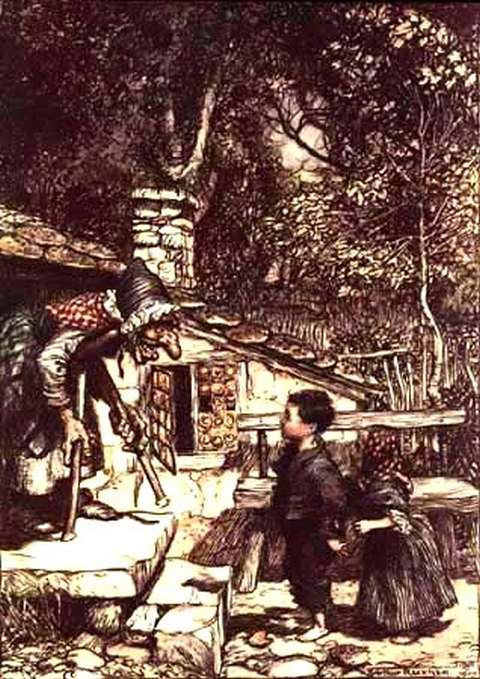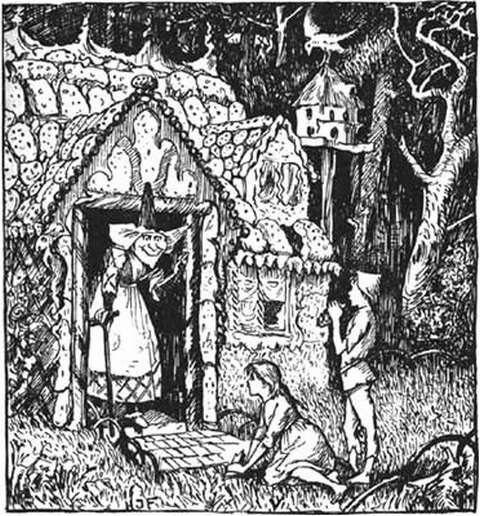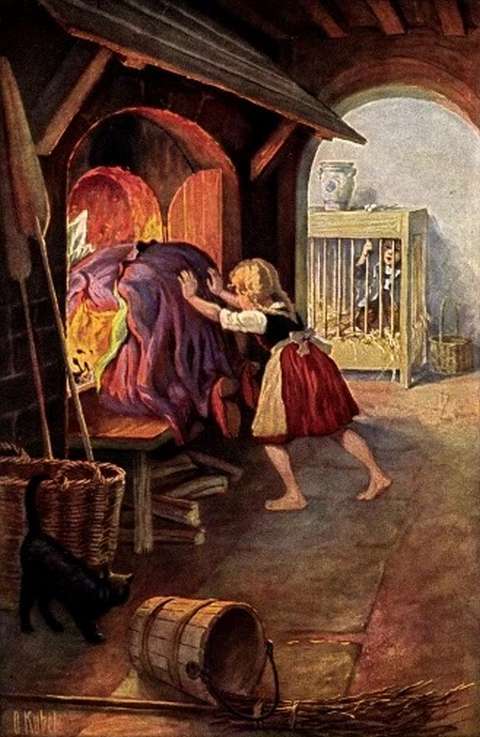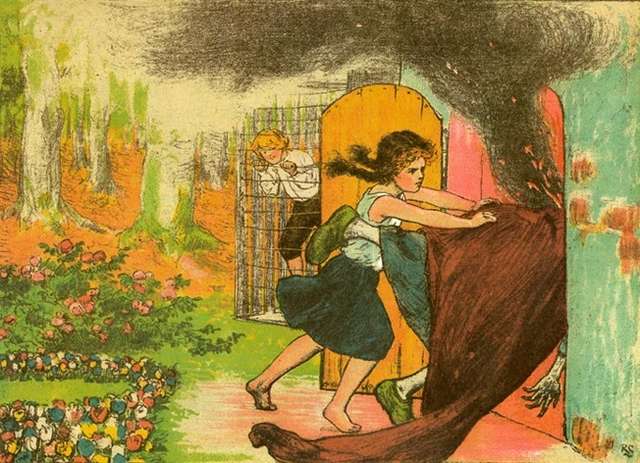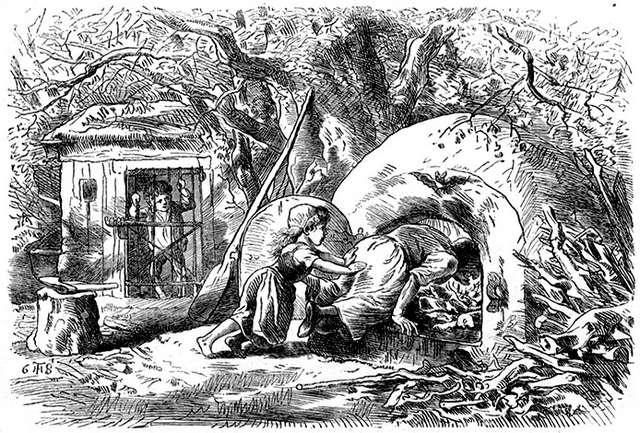The Witch from Hansel and Gretel
For millions of children all over the world, Hansel and Gretel present the most horrifying witch they encounter at a certain moment in their lives. The story is dark from the very beginning - it starts with famine. There is almost no food. Dying from hunger seems imminent in the very near future.
Then another deeply rooted fear materializes - abandonment. Parents don't want to take care of them anymore.
When Hansel and Gretel stray into the woods, only one question remains. Will they die of hunger or be torn by beasts?
Suddenly everything changes in the blink of an eye. They find a house made of cake, candy, and gingerbread. It looks too good to be true.
Well, it really looks too good. Soon, a witch, an owner of the hut, captures Hansel and Gretel. She is a cannibal and uses her home, made of sweets, to lure children in her neighborhood so she could eat them.
Fortunately, Hansel and Gretel are so skinny, that the witch decides to fatten them a bit before they make a decent meal.
Hansel is locked in a cage and Gretel has to work as a maid. Gretel notices that the witch doesn't see well and relies mostly on touch. From time to time the witch checks if Hansel is fat enough by squeezing his finger.
So Gretel gives her brother a chicken bone to offer instead of his finger to trick the witch. For some time, it worked. Then, the witch decides to bake both kids anyway.
When she orders Gretel to enter the oven to check if it's hot enough, the girl tricks her again. Instead of her, the witch goes in and Gretel pushes the cannibal in her own deadly tool. The witch is burnt!
As we can see below, the illustrators of Hansel and Gretel used all three scenes with the witch:
1. At the hut, where everything seems great, including the witch who nicely invites the children in.
2. In the hut, where Hansel is locked, trying to delay his death with a chicken bone trick.
3. At the oven, where Gretel destroys the mighty enemy with some cunnery and a determined push.
Did you notice?
Arthur Rackham was the only illustrator who portrayed the scene with Gretel and the witch at the oven without using the opportunity to destroy the antagonist. Instead of that, he focused on showing Gretel's fear. Remember, emotions in fairy tales were not in the front line in his times. They were mostly perceived as educational material.
That's one way to show originality, add something extra to the already thousand times regurgitated story and its scenes, and, of course, not follow the crowd.
This fairy tale actually offers a zillion ways of interpretation what eventually made it a classic. Here you can learn even more about the story of Hansel and Gretel.
 Fairy Land
The World of
Magical Creatures
Fairy Land
The World of
Magical Creatures

